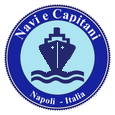QUESTA
NAVE E' REGISTRATA AL N. 257 DEL " NATIONAL HISTORIC SHIP U.K.
"
Il 17.08.2008
un passeggero durante la navigazione cadde in acqua e ...... clicca
e continua a leggere
La Hurlingham
fu una nave passeggeri costruita dai fratelli Salter . In epoca edoardiana,
gentiluomini in flanella bianca, blazer a righe e barcaioli di paglia
portavano le loro dame a fare una crociera sul Tamigi sul ponte scoperto
di Hurlingham o sotto il tendone di tela, che copriva il ponte di
prua. File di salvagenti fiancheggiavano i guardrail e le paratie
e sotto c'era un saloon per i meno avventurosi. L'Hurlingham era un
piroscafo a poppa a tunnel, alimentato da un motore a vapore composto
W. Sisson che non fu sostituito da un diesel fino agli anni '50. Fu
chiamata a Dunkerque e poi trascorse la maggior parte della guerra
nel servizio di emergenza fluviale come gara di rifornimenti. Dopo
la guerra fu acquisita da Thames Launches e trentun anni dopo, per
una stagione, da Marine Transit Ltd. Come le sue navi gemelle, fu
gradualmente ammodernata e modernizzata, fornendo alloggi sicuri e
chiusi, dando accesso al fresco aria solo attraverso il tettuccio
scorrevole e il ponte di prua coperto. In basso, c'è un bar
e quando non sta portando i passeggeri lungo il fiume a Greenwich,
è disponibile come discoteca galleggiante o può ospitare
un gruppo pop o una band jazz. Dal 1979 è gestita da Tidal
Cruises Limited e il suo ampio alloggio ricostruito può ospitare
200 turisti, 180 ospiti per un ballo o un matrimonio, o 132 per una
cena seduti. Man mano che il traffico stradale di Londra diventa sempre
più congestionato, le barche passeggeri stanno entrando in
proprio, offrendo ai visitatori un panorama vario e delizioso della
capitale, lungo una storica autostrada, utilizzata fin da prima dei
romani da re e popolani e tuttora accessibile a bordo delle navi passeggeri
che parteciparono all'evacuazione di Dunkerque nel 1940
THIS
SHIP IS REGISTERED UNDER N. 257 OF THE "NATIONAL HISTORIC SHIP
U.K."
On 17.08.2008
a passenger during navigation fell into the water and ...... click
and continue reading
Another passenger boat built by Salter Brothers
of Oxford seven years after the Viscount is the Hurlingham. In Edwardian
times, gentlemen in white flannels, striped blazers and straw boaters
would take their ladies for a cruise on the Thames on Hurlingham's
open top deck or under the canvas awning, which covered the foredeck.
Rows of life-buoys lined the guardrails and bulkheads and there
was a saloon down below for the less adventurous.Hurlingham was
a tunnel-stern steamship, powered by a W. Sisson compound steam
engine which was not replaced by a diesel until the 1950's. She
was called up for Dunkirk and then spent most of the war in the
River Emergency Service as a supply tender. After the war she was
acquired by Thames Launches and thirty-one years later, for a season,
by Marine Transit Ltd.Like her sister ships, she was gradually up-graded
and modernised, providing safe, enclosed accommodation, giving access
to the fresh air only through her sliding sunroof and her covered
foredeck. Down below, there is a bar and when she isn't taking passengers
down-river to Greenwich, she is available as a floating discotheque,
or can accommodate a pop group or a jazz band.Since 1979 she has
been operated by Tidal Cruises Limited and her large, rebuilt accommodation
can take 200 sightseers, 180 guests for a dance or a wedding, or
132 for a sit-down dinner.As London's road traffic becomes more
and more congested, passenger boats are coming into their own, giving
visitors a varied and delightful view of the capital, along an historic
highway, used since before the Romans by kings and commoners and
still accessible on board passenger ships which took part in the
Dunkirk evacuation in 1940
Former
names
|
Former
flags |
|
Galleria
fotografica
|
|
Photo
gallery
|
|



